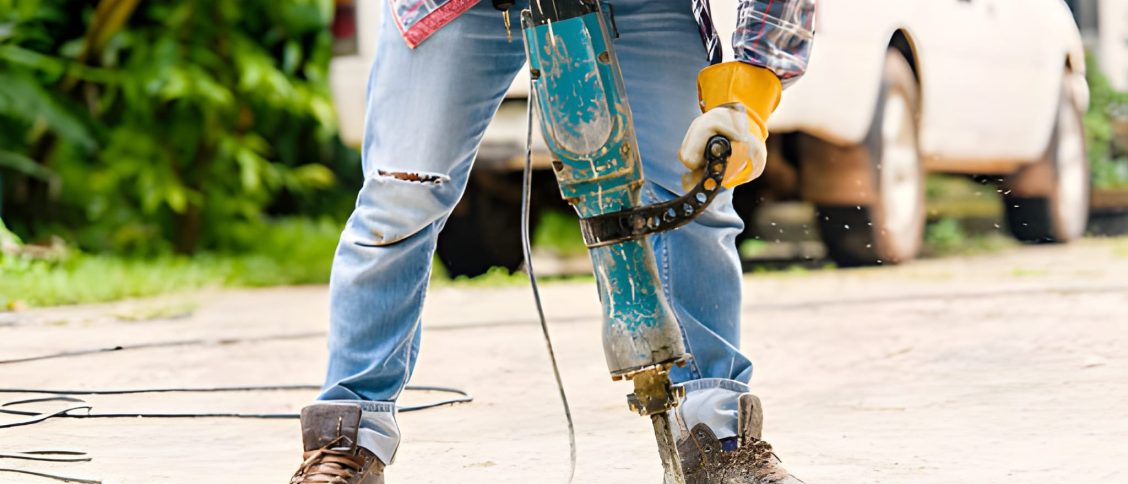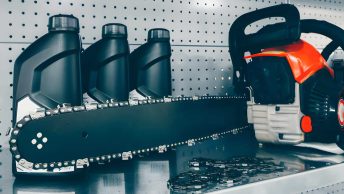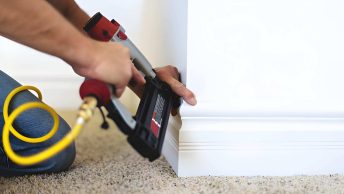If you’ve ever watched a mechanic effortlessly break apart rusted exhaust pipes or seen a worker chip away tile like it’s made of crackers, you were probably witnessing the magic of an air hammer. Despite its rugged appearance, this tool is more than just brute force; it’s one of the most underrated power tools you’ll find in American garages and job sites.
But what is an air hammer exactly? How does it work, and why do professionals and DIYers alike swear by it for tough jobs? Knowing how this tool operates might change your approach to metalworking and demolition, regardless of whether you’re new to power tools or want to improve your setup.
Everything you need to know about air hammers, including their types, applications, and factors to take into account before purchasing one, will be covered in this guide.
What Is an Air Hammer?
An air hammer is often referred to as an air chisel. It is a pneumatic tool that delivers rapid, repeating blows using compressed air. Because of its ability to handle high-impact tasks like cutting through metal, breaking up concrete, or extracting obstinate components, it is recognized as a favorite among mechanics, contractors, and do-it-yourself enthusiasts.
The tool works essentially by forcing pressurized air through an internal piston. This piston strikes the associated bit, typically a punch or chisel, with thousands of blows per minute (BPM). Think of it as a little jackhammer that is made for precision and adaptability instead of merely devastating power.
What sets an air hammer apart from other electric tools is its power-to-weight ratio. It is controllable, portable, and doesn’t overheat when in use for an extended period of time. This makes it a perfect option for jobs demanding a small amount of space, including under an automobile’s chassis or along the edge of a brick wall.
To put it briefly, whether you’re popping out ball joints, cutting sheet metal, or chipping off tiles, an air hammer is the tool of choice when you need speed, impact, and control.
How Does an Air Hammer Work?
An air hammer operates on a simple but powerful principle, using compressed air to drive a piston that delivers high-speed hammering action. The process starts when you connect the tool to an air compressor through a hose. Once you pull the trigger, pressurized air enters the chamber and sets an internal piston into motion.
This piston rapidly moves back and forth, striking the end of the tool bit, usually a chisel, punch, or cutting blade, and transferring that force to the work surface. The result? Thousands of short, powerful impacts per minute (often between 3,000 to 5,000 BPM), strong enough to crack concrete, slice metal, or dislodge rivets with ease.
Unlike rotary tools or electric drills that rely on spinning motion, an air hammer delivers linear percussive force, which is ideal for breaking things apart rather than putting them together.
The speed and intensity of the blows can vary depending on the tool’s design and the CFM (cubic feet per minute) rating of your compressor. For most home garage uses in the U.S., a compressor with at least 4 CFM at 90 PSI is recommended for light to medium-duty air hammers.
Key Uses of an Air Hammer
What makes the air hammer a must-have tool in any serious toolkit is its range of uses across multiple industries, from automotive work to home renovation and heavy construction.
- Automotive Repairs
One of the most common places you’ll find an air hammer is under a car. Mechanics use it to:
- Remove rusted exhaust components
- Separate ball joints and bushings
- Break loose stuck bolts or brake rotors.
- Cut through seized metal parts without torching.
The high-impact force makes short work of what would normally take hours with hand tools.
- Construction and Demolition
In remodeling or demolition, air hammers are used to:
- Chisel tile, break up concrete slabs or cut masonry
- Remove plaster or old flooring.
- Carve into brick or stone with the right bit.
- Metalworking and Fabrication
Need to shape or cut sheet metal? With the right attachment, an air hammer becomes a precision tool for bending, grooving, or cutting metal panels.
- Sculpting and Artistic Work
Believe it or not, some stone carvers and metal sculptors use air hammers for detail work, especially with pneumatic chisels.
The air hammer gives speed and control to any task, whether you’re taking down a tile wall or wrenching on an old truck.
Types of Air Hammers & Attachments
Each size and strength of the air hammer is made especially for a certain task. How and where you intend to use it will determine which type is best for you.
Types of Air Hammers
- Light-Duty Air Hammers
- Compact, affordable, and great for DIYers or occasional use.
- Ideal for automotive repairs and light chiseling tasks.
- Medium-Duty Air Hammers
- A solid middle ground, more powerful without being too heavy.
- Commonly used in home renovation and moderate demolition work.
- Heavy-duty or Long-Barrel Air Hammers
- Built for serious impact, often used on construction sites.
- Longer piston stroke delivers deeper, harder blows.
- Heavier and requires a higher CFM compressor (usually 5–8 CFM at 90 PSI).
Common Attachments & Bits
Most air hammers use quick-change spring retainers that allow fast swapping between bits.
Popular bit types include:
- Flat chisels (tile, stone removal)
- Panel cutters (auto body work)
- Punches and rivet removers
- Tapered chisels (precision cutting)
- Spot weld breakers (sheet metal work)
With the right attachment, your air hammer becomes a multi-tool, ready for almost any impact job.
Air Hammer vs. Impact Hammer: What’s the Difference?
Many people confuse an air hammer with an impact hammer (or impact wrench), but these tools have very different purposes despite both using percussive force.
Air Hammer
- Function: Delivers linear, back-and-forth blows.
- Best for: Chiseling, cutting, carving, demolition.
- Action: Pneumatic piston strikes a bit (like a chisel or punch) repeatedly.
- Control: Great for breaking things apart, from tiles to rusted bolts.
Impact Hammer / Wrench
- Function: Delivers rotational torque with hammering force.
- Best for: Tightening or loosening bolts, lug nuts, and fasteners.
- Action: Combines a hammering mechanism with rotational motion to spin sockets.
- Control: Designed to turn, not to cut or break surfaces.
In short:
- Use an air hammer when you need impact in a straight line, like breaking or cutting.
- Use an impact wrench when you need powerful rotational force, like removing stubborn bolts.
Although they are not interchangeable, both are necessary if you work with machinery, autos, or construction.
Pros and Cons of Using an Air Hammer
The air hammer has benefits as well as drawbacks, like any other power tool. Whether you’re working around the house, in a garage, or on a construction site, knowing both can help you decide if it suits your needs.
Pros
- Speed & Efficiency: Removes material or components much faster than hand tools.
- Versatility: One tool, many tasks, from cutting metal to removing tiles.
- Compact & Lightweight: Easier to handle than full-size demo tools like electric jackhammers.
- Durable for Heavy Use: Pneumatic systems are less likely to overheat and wear out.
- Easy Attachment Swaps: Most models support quick-change bits for fast tool changes.
Cons
- Needs an Air Compressor: Not a standalone tool; you’ll need the right compressor (usually 4–8 CFM at 90 PSI).
- Can Be Loud: Expect noise levels to reach 90+ decibels, requiring hearing protection.
- Not for Precision Work: It’s powerful but not delicate, not ideal for fine detail tasks.
- Vibration Fatigue: Extended use can cause hand strain or vibration discomfort without anti-vibe gloves.
The air hammer is a high-impact specialist, perfect for tough jobs, but it’s not the answer for every task.
Choosing the Right Air Hammer: What to Look For
Buying an air hammer isn’t just about grabbing the first one you see on sale, especially if you want it to last and perform well. Keep in mind the following when selecting the best model for your needs:
- Blows Per Minute (BPM)
Faster and more effective material removal can be achieved with higher BPM. Heavy-duty machines surpass 5,000 BPM, whereas light-duty variants typically range between 3,000 and 4,000 BPM.
- Air Consumption (CFM Rating)
Check that your air compressor can supply enough CFM (Cubic Feet per Minute) at 90 PSI, the standard for most air tools.
- Light-duty: 3–4 CFM
- Medium-duty: 4–6 CFM
- Heavy-duty: 6–8+ CFM
- Barrel Length
- Short-barrel models: More compact, better for tight spaces and precision tasks.
- Long-barrel models: Deliver harder, deeper impacts, ideal for demolition and heavy-duty use.
- Vibration & Grip Comfort
Look for features like anti-vibration handles or ergonomic grips. Prolonged use can lead to fatigue or hand strain.
- Build Quality & Accessories
Select versions that are built from hardened aluminum or forged steel. A carrying container, a spring retainer, and a variety of bits are all included in an excellent beginner package.
Power, control, and compressor compatibility should be kept in mind when buying an air hammer. If you plan to use it more often, then don’t cut corners.
Safety Tips When Using an Air Hammer
Even though an air hammer is quite simple to operate, it is still a powerful instrument that can be harmful if used carelessly. The following are crucial safety precautions that all users should take:
- Always Wear Personal Protective Equipment (PPE)
- Safety goggles: Protect your eyes from flying debris.
- Ear protection: Air hammers can exceed 90 dB, which can damage hearing over time.
- Gloves: Anti-vibration gloves help reduce fatigue and offer better grip.
- Steel-toe boots: Especially important when working on demolition or with heavy materials.
- Inspect the Tool Before Use
- Check for air leaks, worn hoses, and secure fittings.
- Make sure the bit is locked in place using the correct retainer.
- Operate with Caution
- Even when the tool is disconnected, never aim it against yourself or other people.
- Use both hands for better control, especially during long sessions.
- Let the tool do the work; no need to force it.
- Maintain a Clear Work Area
- Ensure good footing and remove tripping hazards.
- Keep bystanders and pets at a safe distance.
Using an air hammer safely means respecting its force and staying alert, even during simple jobs.
Final Thoughts: Is an Air Hammer Worth It?
An air hammer might be one of the most useful items you can add to your toolbox if you perform any type of demolition, house remodeling, or automobile work. In addition to doing difficult tasks that might otherwise call for physical force or specialized equipment, it saves time and effort.
When combined with the appropriate accessories and an appropriate air compressor, this equipment offers significant value for tasks like cutting sheet metal, chipping away tiling, and releasing rusted bolts.
Does it work flawlessly for all tasks? No. However, it should go without saying if your job involves breaking, separating, or molding rough materials. After using it, a large number of American mechanics, contractors, and DIYers believe it to be essential.
For the power, speed, and versatility it offers, an air hammer easily earns its spot in your workshop or garage.




